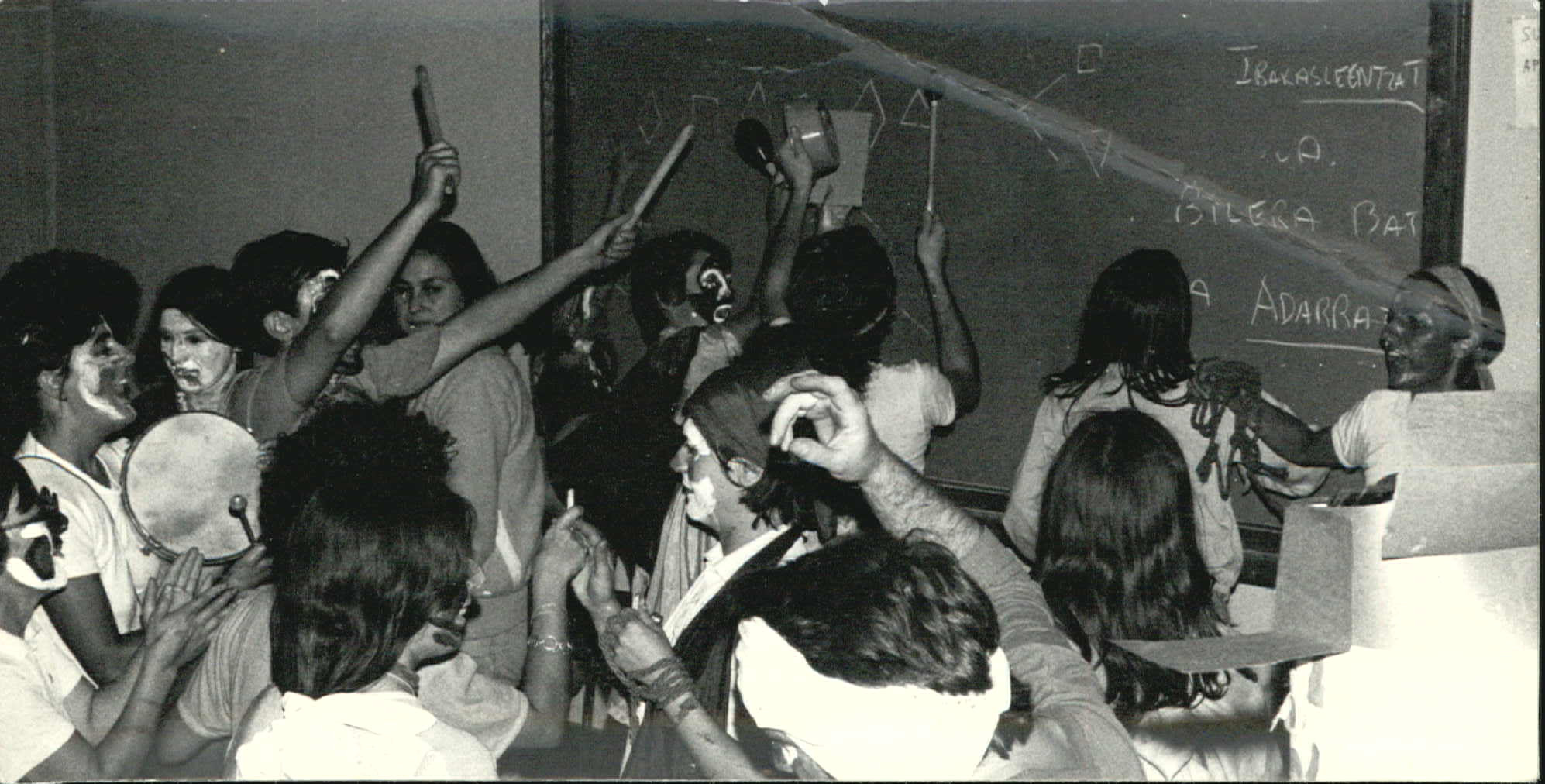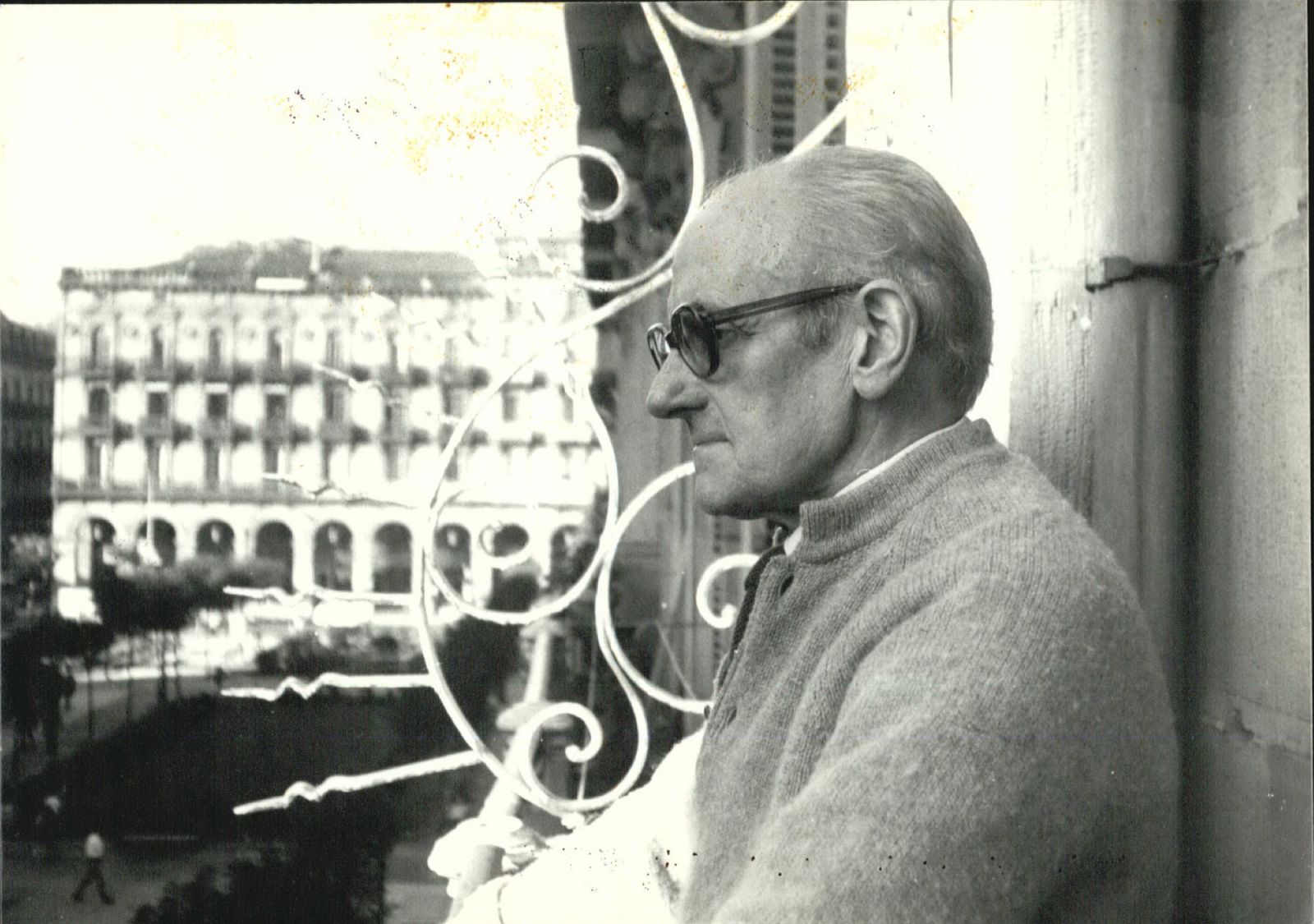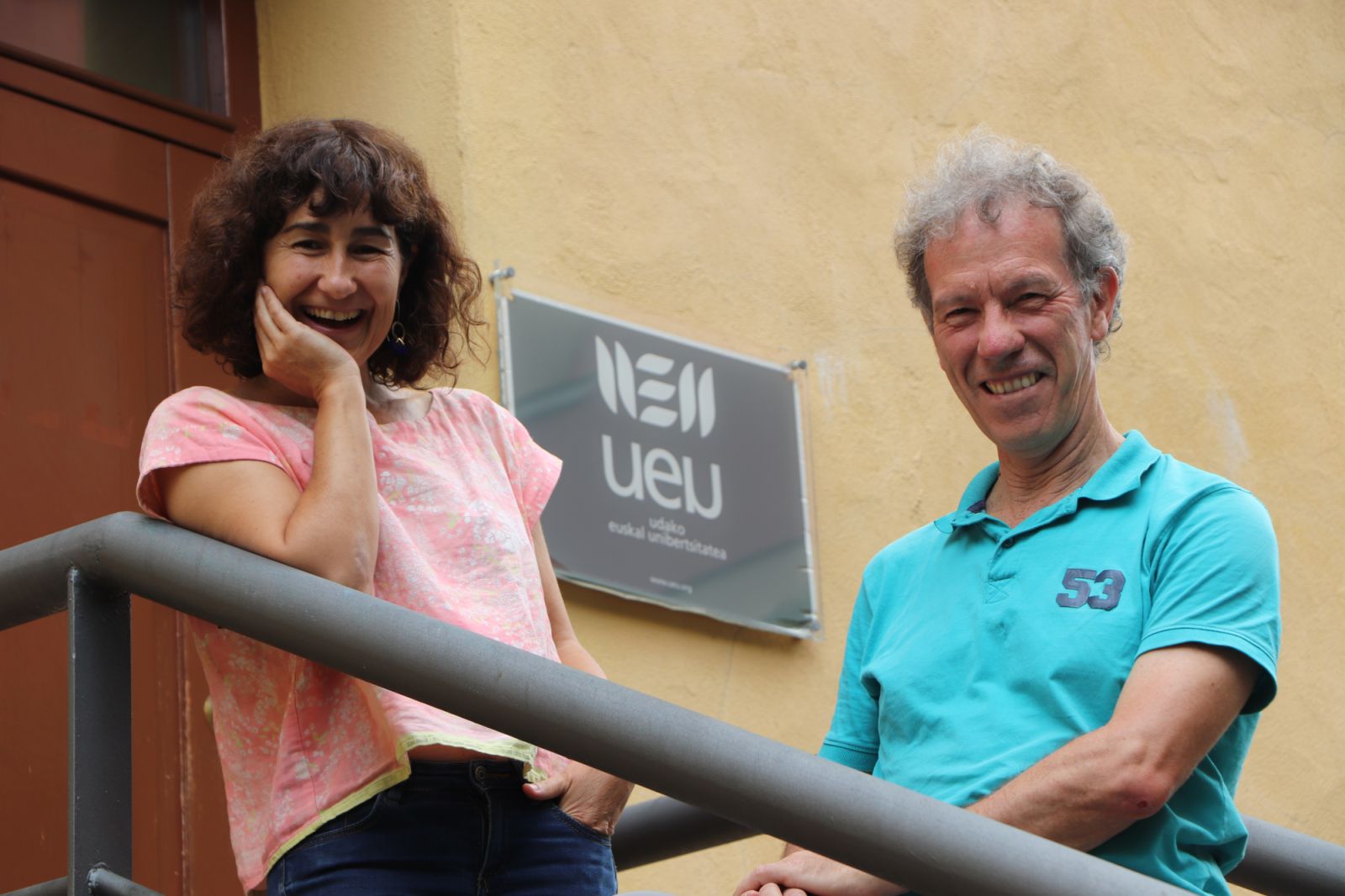
As I say, the UEU community celebrates its 50 holiday years. As we know, there are many kinds of champion formulas that are wanted and the Basque Summer University has decided on its own, as UEU Secretary General Ane Sarasua told us: “When we started designing the anniversary, we had three goals. The first, to celebrate; in addition, we came from the pandemic and wanted a face-to-face celebration. Secondly, to make our project better known and, to do so, to bring the celebration of the EU to all capitals, taking advantage of knowledge and knowledge, but with a playful counterpoint, that is, through the microconferences of young researchers, and with the contribution of snack and music”. The “UEUfestak” took place in early June in Baiona, Eibar, where the UEU, San Sebastian, Pamplona, Vitoria and Bilbao have their school center, together with the researchers of the new generation, “bringing together the UEU members who have accompanied us all their lives”, according to Kepa Sarasola, director of the UEU. Following the opening ceremony of the 50th anniversary courses in Baiona, where the UEU took its first steps, the second institutional, academic event will be held in Bilbao, on 21 September, at the Kafe Antzokia, with the presence of representatives of the universities and society of the Basque Country, and the presentation of the renewed web and the new corporate audiovisual. Director's message: “We will transfer to each other that our project is not over, that we want to make the Basque University, create a university that considers the Basque Country as a language of communication,” which is also the objective of the EU.
1972, Karlos Santamaría
Making history, in 1970-72 the Basque Weeks were organized at the Basque Stand in Baiona. In 1972, Karlos Santamaría addressed the need to create a Basque University, so the Euskaldunak, Ikas and Fededunak associations decided to organize the UEU in the summer of 1973. This university was held from August 29 to September 8, under the tutelage of Euskaltzaindia. And in this, Kepa Sarasola has made us read the words of Santamaría in the triumph: “I think there are two different functions within our University. One could be called the Basque University, and another would be called the University of the Basque Country to explain the difference. [...] We will call the University of the Basque Country the set of existing universities and fake universities that will exist in the Basque Country. On the contrary, although this belief has a utopian appearance, the Basque University is a university in Basque which, by my terminology, should be ‘alma mater’ of Basque culture and language”. Words of Santamaría, therefore, collected in 1977 by Jakin magazine.

The first two activities of the EU were held at the Maurice Ravel College in San Juan de Luz, the next two at the Uztaritz Seminar. In 1977, the EU was held in Pamplona under the direction of Martin Orbe: “I have to quote Manex Goienetxe. He observed that, not only he, the majority of the students were from the South, that the money was also raised in this party, that the UEU needed here, and here Navarre. So came the years of Larraona in Pamplona. In my case, Anton Artiñano gave my name to run the EU.” Kepa Sarasola, along with Manex Goienetxe, has included the names of Piarres Xarriton, Jean Haritxelar, Karlos Santamaria, Joxe Ramon Etxebarria and Txillardegi: “All men, but soon there are mathematicians Maria Jesús Esteban and Anjeles Iztueta, or Edurne Alegria and Mari Karmen Meñika, for example, who have done bad work and are obliged to mention it.” The time of the years of Pamplona came…
“In 1977 an infrastructure was established for the next
25 years in
Larraona” (Kepa Sarasola)
Larraona de Pamplona
In the Northern Basque Country, the foundations of the EU were laid towards the Basque university. After the death of the dictator Franco in the seedbed of 1975, two years later the first session of Pamplona was held, according to Sarasola: “By then, the movement of the ikastolas was boiling, the movement for the Euskera was also strong, the Euskara batua was also reinforced, although it had to be taken to the plaza. Qualitatively, Iparralde's was important. Quantitatively, the EU in Pamplona took a leap: 500 people met in Larraona at the first time. The infrastructure was perfect: it was a boarding school for those who wanted, dining rooms and rooms, complementary sessions and so on.” They were years of great success and great future. “In 1977, the infrastructure in Larraona was consolidated for the next 25 years. But in addition to the fortnight of July, he worked throughout the year and presented himself in Pamplona. Larraona was the tip of the iceberg”. Ane Sarasua stresses that then the departments were structured, linked to the interdisciplinarity of the areas of knowledge, to the horizontality between the students and the faculty. At some point there were 27 disciplines, although currently not all of them are in force.
1985, EU year round
According to Karlos Santamaría, “the Basque University is a university in Basque that should be ‘alma mater’ of Basque culture and language”, and, of course, it is “year-round, not only summer”, according to Sarasola. He considers the tip of the iceberg to be the summer fortnight, whether from Bayona or Pamplona. The truth is that Secretary General Ane Sarasua: “Those student-teachers were militants, young people, and soon began to obtain a place in the UPV/EHU, to influence the Basque plans of the UPV/EHU, to form groups like IXA… That is, what was absorbed in Larraona began to be carried out in official universities for the careers to be in Basque. They didn’t have enough summer,” and so in 1985, the UEU started organizing conferences and conferences throughout the year.
A year later, the EU acquires legal personality with two workers: Mari Karmen Meñika, Secretary General, and Nekane Intxaurtza, head of the editorial activity.

Sarasola wanted to make notes about the time, considering the initial generation wonderful. “It was a lot of smart people, those who invented what other languages have not invented, the Basque who invented it, from the hand of José Ramón Etxebarria, Joseba Intxausti, Andoni Sagarna, Joxe Azurmendi and many others… The most complex issues were also able to communicate in Basque, not only to translate – there was still the experience of transparency. It wasn't chance or chance. “It seems that it happened because it had to happen, but no, in other countries it has not. In the history of the Basque Country, in the nineteenth century, attempts have been made to deal with themes in Basque, but without success, until the 1970s.” In this sense, the people who, according to Sarasola, have met with the intention of the Basque university.
In 1985 the EU held a conference in which it approved, among other things, the membership, with a broad social base and strong commitment to the project.
2000 as a milestone
Ane Sarasua started working in the EU in 1997 and has lived close to those of acogida.Tiene as a milestone in 2000: “We realized that we had to leave behind the time of Larraona, people started not to fall asleep, to make bus trips… and that came with increased resources: In the year 2000 we went from two to five jobs, the Provincial Council of Bizkaia offered us institutional support and recognition, based in Bilbao, the editorial always in Navarra, the delegation of the Northern Basque Country in Baiona, and the City of Eibar ceded the Markeskoa palace”. The EU headquarters and the major colleges are currently present. The 16th century palace, Markeskoa, with a patrimonial qualification, was rehabilitated but empty at that time, waiting for anyone to make it live. Ane Sarasua says: “It was 900 square meters. In 2000 we signed an agreement for 20 more years for 5 more years.” They started blowing: “Bizkaia’s property and 900 square meters of Eibar... is not Larraona, but it is a powerful showcase. Geographically, Eibar, we began to leave the summer, in addition to conferences and days, they linked us to continuing education”, that is, to the process of lifelong learning.
“Teachers and researchers around 30 years old will create a new miracle generation”
(Kepa Sarasola)
The Markeskoa residence offered endless possibilities to the EU. In 900 square meters of the Palace they have an event room, classrooms, computer room, offices... and soon they have larger staff: informatics, communications officer, documentalist to feed the database Inguma, consultant for the pedagogical model... Synthesis by Ane Sarasua: “In the 2000-2010 decade, we completed 75% of the 21 jobs today. We came with one person to Markesco and now we are sixteen in Eibar. The decade was prolific and useful.” In 2011, the UPV/EHU and the UEU signed a framework agreement to organize scientific congresses, to share databases of the Basque scientific community, to feed the corpus of doctoral theses in Basque… On the other hand, the UEU started to promote postgraduate courses, and in the course of 20 years, in 2019, the UPV/EHU approved the Online Institute of Goi

The future, the new generations
Kepa Sarasola believes that the UEU is a very dynamic agent for dealing with university subjects in Basque: “We are catalysts, tractors, we are working for the Basque country to reach all areas of the university”, of course, in collaboration with other universities. He has addressed and talked about new generations: “The teachers and researchers around 30 years old will create a new miracle generation, they have great potential, we have the best teachers, Basque researchers of all time, our job is now to offer them new utopias, which seemed impossible for Koldo Mitxelena, we have done it: making university degrees in Basque, demonstrating that it is possible”. And utopia, “now the project is an online university to learn from home in Basque. That does not exist, and that is our next step. It is one of the great gaps that the university has, that we can fill, within lifelong learning, without making anyone suffer, offering comfortable learning, giving the opportunity to acquire a second degree... They have done so in Catalonia, through the Open University (UOC), where we also want to go in the UEU. We have been behind this model for twenty years”, although in organizations some voices said that this model is an orientation, in the surveys carried out they have seen it possible in the EU.
From heaven it is known that Euskera is also in official universities, and the UEU is looking forward, in contact with universities from one to the other, “without collaboration between universities we cannot meet our objectives, the Basque University of Carlos Santamaría”, says Kepa Sarasola.
“Euskal munduaren aitortza dugu, bai, ARGIAren aitortza, Jakin-ena, euskarazko hedabideena. Erdal munduak ez gaitu ikusten. Oraintxe jasotzen ari garen oihartzunek horixe erakusten digute. Euskal komunitatearen baitan UEU oso maitatua da, eta erreferentzia ere bai. Proiektu batean sartzen bagara, gure atzetik datoz 1.300 bazkideak eta inguruan mugitzen diren beste 10.000k. Esparru horretan gure iritzia oso inportantea da. EHU sortu zenean, esaten zuten ezinezkoa zela euskara unibertsitatean modu praktikoan sartzea, baina sartu da gradu guztietan, UEUren lanari esker neurri batean, giro sortzailea dugulako, militantzia handia, jende oso trebea” (Kepa Sarasola, UEUko zuzendaria)
Transmisioa eta dantza taldeetako erreleboa aztertu nahi izan dugu Dantzan Ikasi topaketetan, eta gazte belaunaldiek lan egiteko ereduak ezagutu nahi izan ditugu “Gazteen parte-hartzea euskal dantzan” mahai inguruan: Eder Niño Barakaldoko... [+]